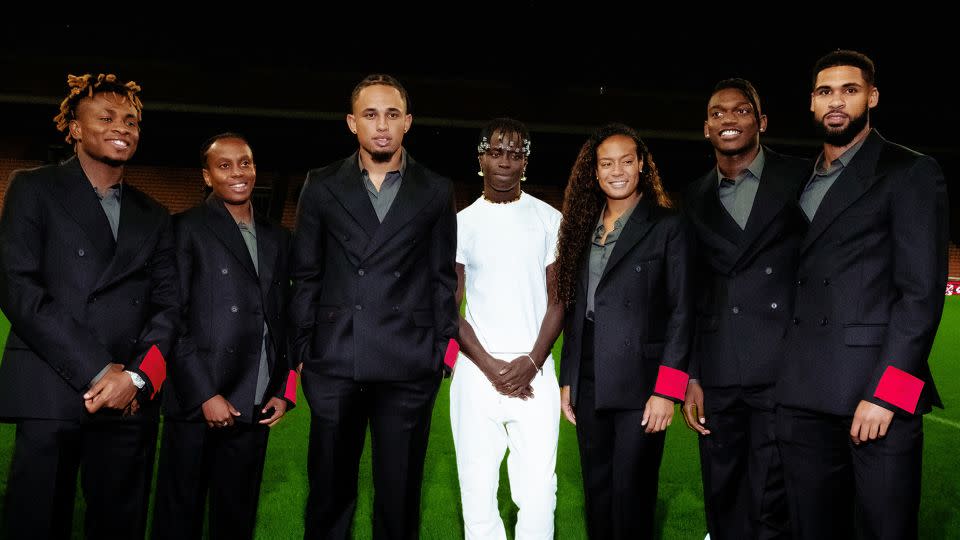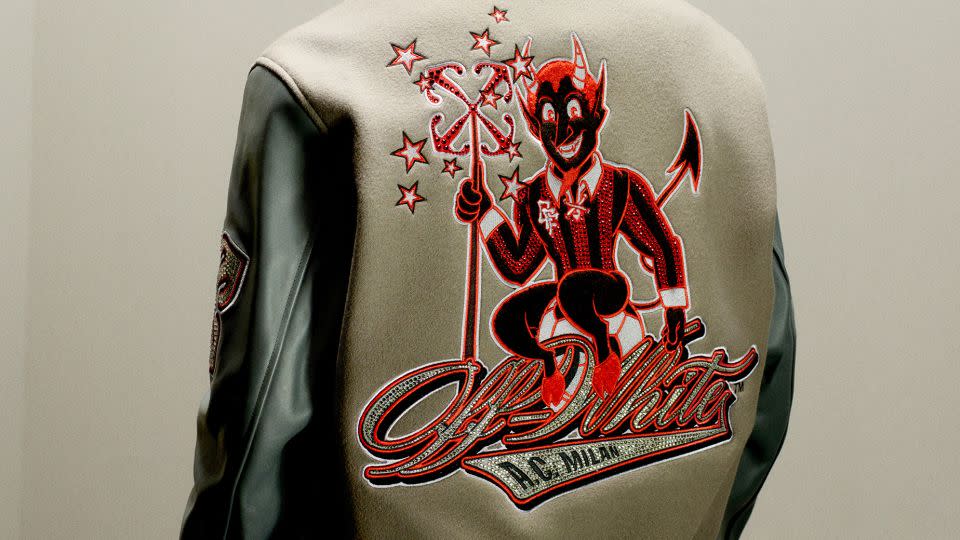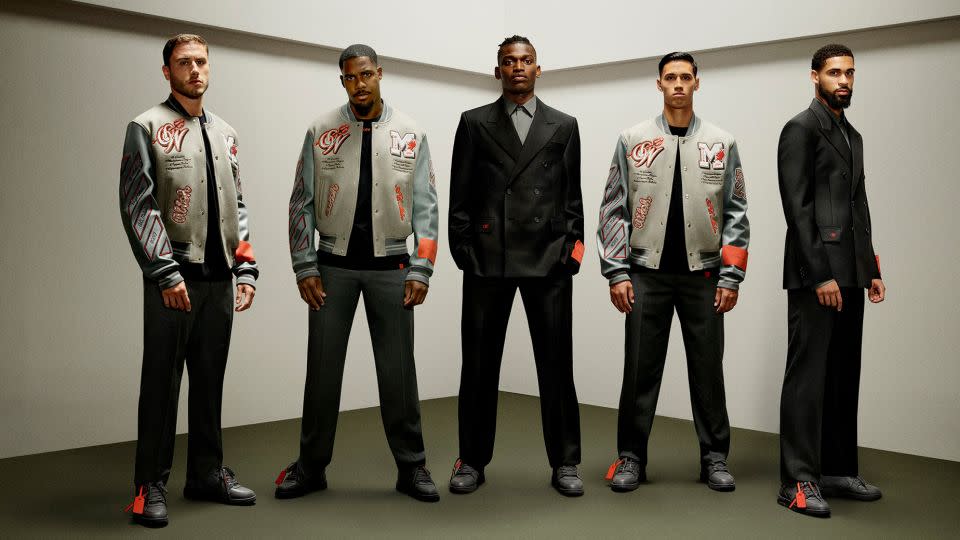How this soccer team became a style success story
Editor’s Note: This article was originally published by The Business of Fashion, an editorial partner of CNN Style.
When AC Milan took the field last month in a home game against Napoli — a clash of two of Italy’s most historic soccer clubs — the Milanese team donned blacked-out jerseys designed by Los Angeles streetwear brand Pleasures.
Designated as the team’s official fourth kit — the limited edition apparel the team will play in for select games this season with one “light” and one “dark” colorway — the jerseys feature references to Milan’s gothic architecture as well as hip-hop culture.
It was an unlikely partnership: the punk-inspired indie streetwear label worn by celebrities like Kylie Jenner and The Weeknd had no prior connection to the Italian sports mainstay. But the commercial reception to it was phenomenal.

February 8, the initial launch of the collaboration when jerseys went on sale for fans, was AC Milan’s most successful day in terms of e-commerce sales, up 69 percent above its last record, according to the team. The $180 cream-colored version of the jersey proved to be the biggest hit and has become an all-time bestseller, now trading on StockX for as much as $290.
The Pleasures tie-up may have been a surprise to traditional soccer fans, but it was by no means an accident. AC Milan has pursued a number of partnerships — including tapping Off-White as its official “style and culture curator” — since its $1.2 billion acquisition by US investment firm RedBird Capital Partners in August 2022. Under new ownership, the team has positioned itself as not only a soccer club but a lifestyle brand, creating new revenue streams through thoughtfully designed merch that goes beyond one-off collaborations.
AC Milan’s infiltration of fashion has gone further than any soccer team before, even France’s Paris Saint-Germain (PSG), which not so long ago was the favored sports collaborator of brands like Dior, Stüssy and Jordan. Its new Qatari owners also invested heavily in growing the team’s brand, but lost its allure to fashion when two of its all-stars, Lionel Messi and Neymar Jr. left the club in quick succession (their final standout player, Kylian Mbappé, is set to depart this summer).

Unlike PSG, AC Milan does not have the same kind of international stardom in its squad that automatically comes with cultural caché. The team forged its collaborations as part of a global marketing strategy rather than pegged to any one player, and therefore is less at risk of losing its prestige when the best athletes leave. Its long-term partnership with Off-White, which produced several collections for the men’s and women’s teams off-field use as well, also provides a level of insider access to the fashion industry that has never been achieved by another team before.
The Pleasures partnership was designed with the team’s 27 million North American fans in mind, and it yielded the right results: the US accounted for the most sales of the Pleasures jersey outside of Italy. It was also intended to reach younger fans, and over 60 percent of sales went to consumers aged under 30, according to the club.

AC Milan’s unique deal with its kit manufacturer, Puma, is another crucial piece of its fashion strategy. The German sportswear giant acts as a valuable conduit to the fashion industry, helping facilitate collaborations with brands like Koché and Pleasures.
“Milan’s success as a fashion player is built on the fact that its partnerships appear authentic,” said Lauren Cochrane, a fashion and sports reporter at The Guardian. “It’s not just the club ticking a box… they already have that streetwear credibility.”
Editor’s Note: This article was originally published by The Business of Fashion, an editorial partner of CNN Style.
For more CNN news and newsletters create an account at CNN.com